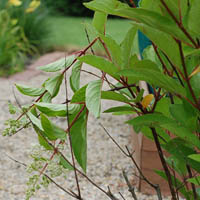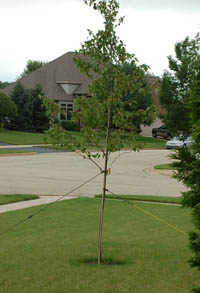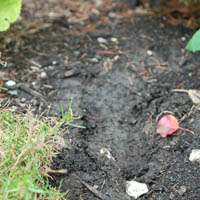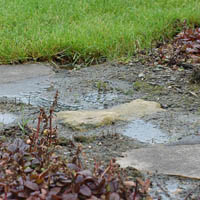Dealing with a rainy season
Every year is different and sometimes the weather lottery gives you the best of all worlds, sunshine and gentle rain…. But then again at other times it can be blazing heat and drought or ‘toad strangler’ rains and never ending cloudiness. When it is your turn for the cloudy and rainy weather you can see problems begin to develop in your flower or vegetable garden.
Every year is different and sometimes the weather lottery gives you the best of all worlds, sunshine and gentle rain…. But then again, at other times it can be blazing heat and drought or ‘toad strangler’ rains and never ending cloudiness. When it is your turn for the cloudy and rainy weather, you can see problems begin to develop in your flower or vegetable garden. Sadly there is not a lot you can do to change things but you can do some preparation and some clean up to help get you through dealing with a rainy season, until the sun starts shining again. Here are rainy season gardening tips below:
 | 1. Check your garden and look for any damage from long bouts of rainy weather or storms. Any broken stems should be removed; sometimes you only need to remove a few damaged leaves. |
 | 2. Stake or support plants where needed, long wet periods usually increase growth on plants, and they can get weakened by too much water. Also the lack of sun makes a lot of the new growth even floppier but only the return of the sun can change that. So check and see if any of your garden plants need a bit of support. |
 | 3. Don’t walk on, compress or compact the soil. When your garden soil is very wet and you walk on it a lot or try to dig a hole, you actually can compact the soil and make it less likely to drain. This is less likely to be a problem in soils where you have added a lot of compost and more likely to be a problem if you have a heavy clay soil. |
 | 4. Erosion control. Take a look around, the heavy rainfall may be making inroads into your garden and washing out certain areas or washing soil away. If you find places where soil is washing away from the roots of plants, add some soil to cover the roots tamp into place gently and try to keep exposed roots covered. |
 | 5. Fertilizer… seriously? Yes, heavy rains and increased rainwater will wash away nutrients and leave your plants starved for good old fashioned nutrients. You can use any fertilizer but organic fertilizers tend to not wash out quite as quickly as liquid fertilizers. Try using something like blood and bone meal or fish emulsion. If you want an even slower continual release of fertilizer try Proven Winners Premium Continuous Release Plant Food. |
Don’t forget that garden hygiene is also a big factor in keeping disease from starting in the garden when the weather turns cloudy and wet. Another rainy season gardening tip is to remove all dead leaves and branches, if you see signs of a disease try removing those infected plant parts too and since they may be infected with molds or fungus, don’t put them in your compost pile, but throw them out with the trash.
If cold, cloudy, rainy weather is normal in your area, then start doing some homework to find which vegetables and flowers do best in your region! Contact your local garden center and ask the experts, for many folks you can also contact your local county cooperative extension service and get specific advice on the best plants for your county!
Consider containers. If you regularly have trouble in the ground with wet soil, wet weather very hard compacted soil, maybe it will be easier all around to simply grow your plants in containers? A container drains better than most soils and also gets the plant up off the ground for improved air circulation. Sometimes a simple shift into pots is one rainy season gardening tip that can make all the difference.
Things to think about for next year:
- Add compost to your soil before planting, the addition of good compost will help most soils to drain better and provide a better home for your plant’s roots!
- Consider installing a raised bed, which acts a lot like a container (with better drainage and air circulation) but also is easier on the gardener by keeping things up higher so you have to do less stooping, bending, and sitting on the ground!




